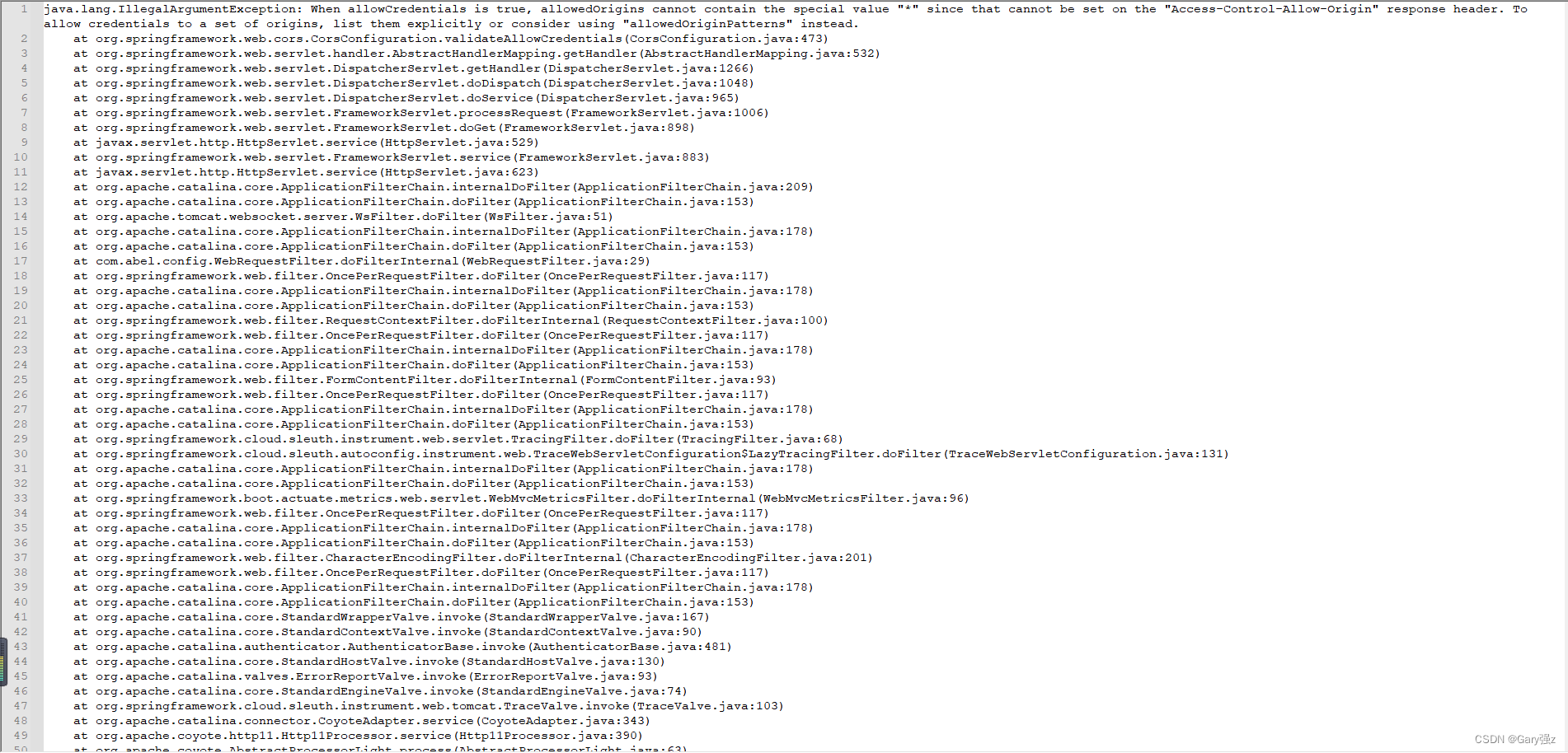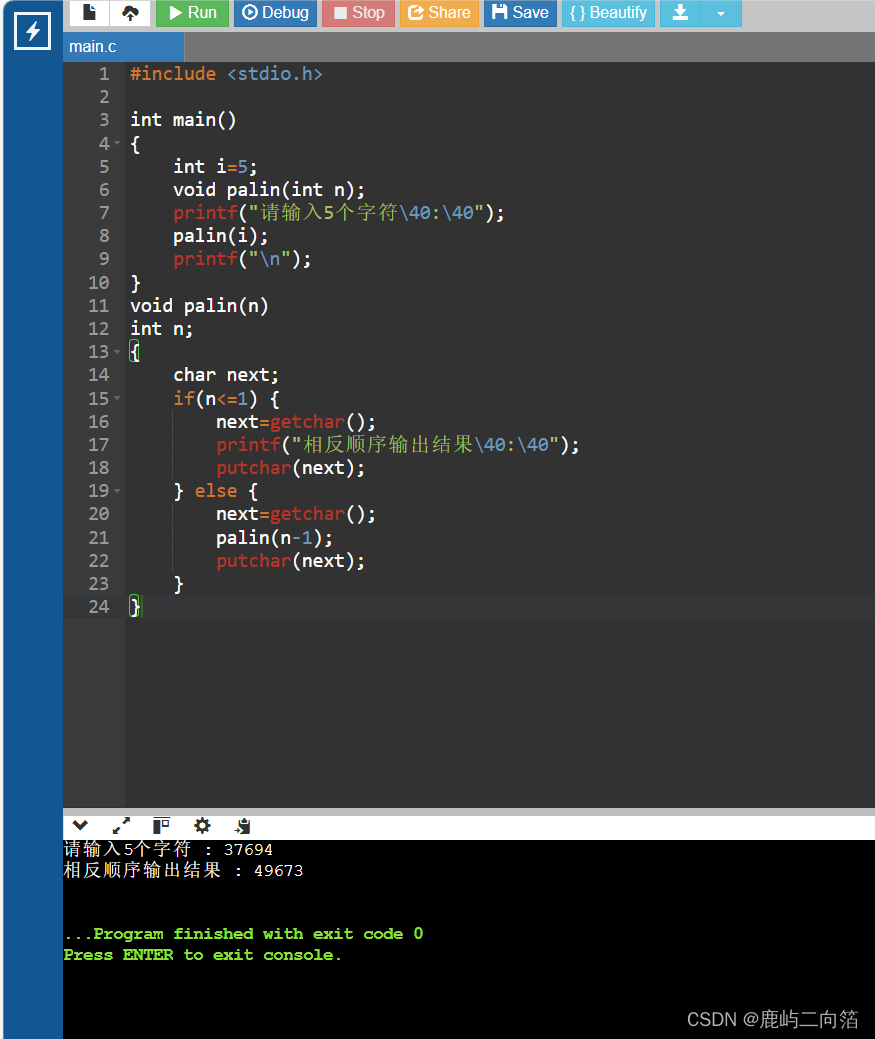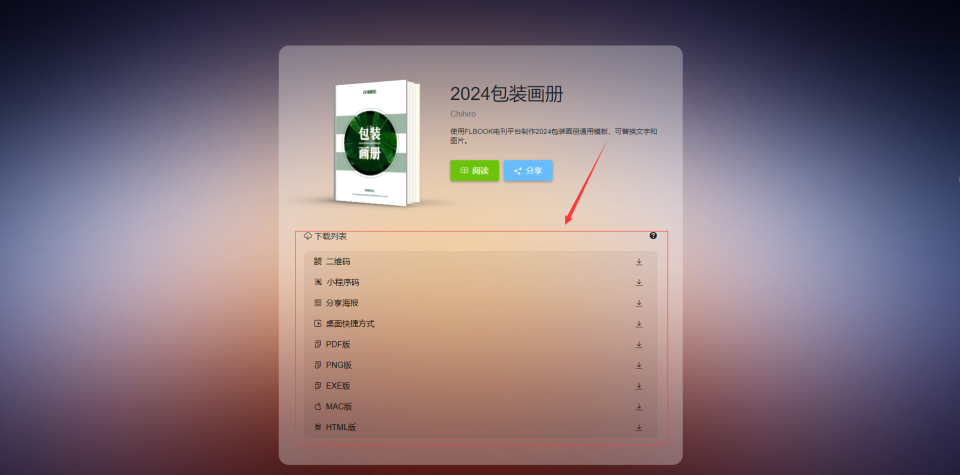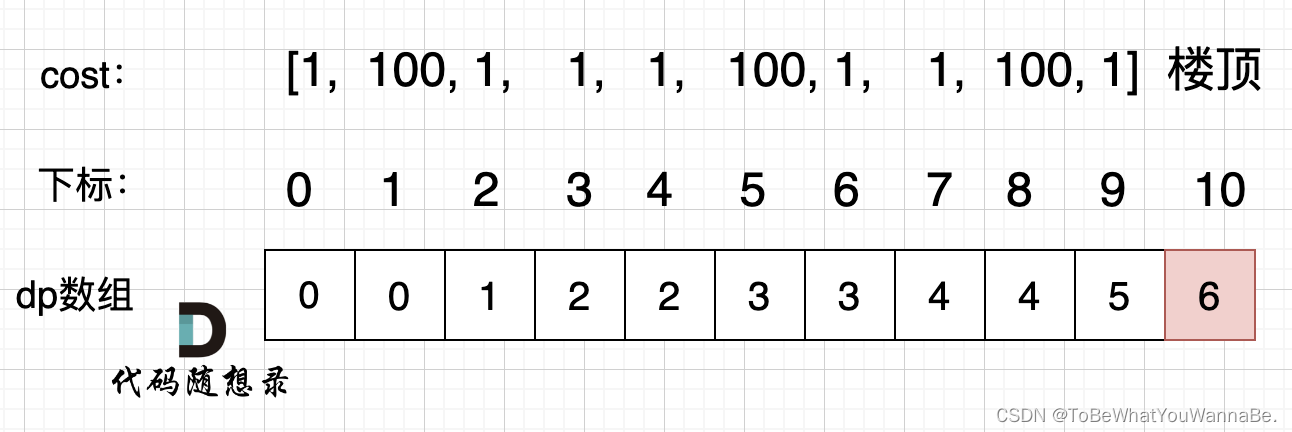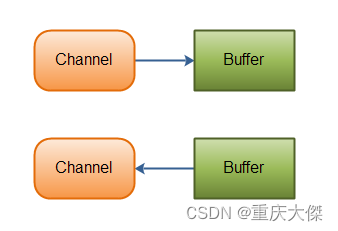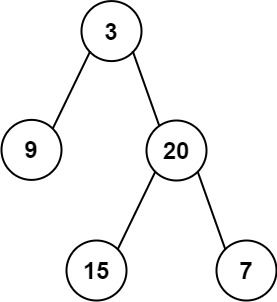一、简介
Crypto++(也称为CryptoPP、libcrypto++或cryptlib)是一个免费的开源C++库,提供了多种加密方案。它由Wei Dai开发和维护,广泛应用于需要强大加密安全的各种应用程序中。该库提供了广泛的加密算法和协议的实现,包括:
-
对称加密算法:AES、DES、3DES、RC2、RC4、RC5、RC6、Blowfish、Twofish等。
-
非对称加密算法:RSA、DSA、ElGamal、ECC(椭圆曲线加密)等。
-
哈希函数:SHA-1、SHA-2(SHA-224、SHA-256、SHA-384、SHA-512)、MD2、MD4、MD5、RIPEMD-160等。
-
消息认证码(MAC):HMAC、CMAC等。
-
数字签名算法:DSA、ECDSA、EdDSA等。
-
随机数生成器:各种伪随机数生成器和真随机数生成器。
-
密码协议:SSL/TLS、SRP(安全远程密码协议)等。
Crypto++的设计目标是提供高性能、高质量的加密算法实现,并且易于集成到C++应用程序中。它是一个跨平台的库,支持多种操作系统,包括Windows、Linux、macOS等。
二、下载
Crypto++下载:
Crypto++ Library 8.9 | Free C++ Class Library of Cryptographic Schemes
或者Tags · weidai11/cryptopp · GitHub
cryptopp-pem下载:
PEM Pack - Crypto++ Wiki ,滚动到页面最下方下载
PEM Pack 是一个消息加密的部分实现,它允许你读取和写入 PEM 编码的密钥和参数,包括加密的私钥。该包额外提供了对 RSA、DSA、EC、ECDSA 密钥以及 Diffie-Hellman 参数的支持。该包包含五个额外的源文件,一个使用 OpenSSL 创建测试密钥的脚本,一个用于测试读取和写入密钥的 C++ 程序,以及一个用于验证由 Crypto++ 写入的密钥的脚本。
最终下载文件如下:
cryptopp-CRYPTOPP_8_7_0.zip
cryptopp-pem-master.zip
三、编译静态库
1、解压cryptopp-CRYPTOPP_8_7_0.zip
再解压cryptopp-pem-master.zip,内容全部拷贝到cryptopp-CRYPTOPP_8_7_0中
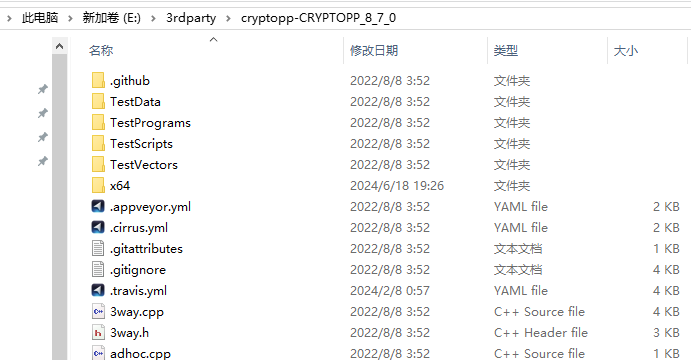
2、VS打开cryptest.sln工程
3、往子工程cryptlib中加入pem包
选中cryptlib,右击“Header Files”->添加->现有项:
-
pem.h
-
pem_common.h
右击“Source Files”->添加->现有项:
-
pem_common.cpp
-
pem_read.cpp
-
pem_write.cpp
4、修改属性页-》配置属性-》C/C++ -》代码生成-》运行库 。debug模式选"多线程调试DLL(/MDd) 或者"多线程调试(/MTd)"",release模式选择“多线程DLL(/MD)” 或者"多线程(/MT)"
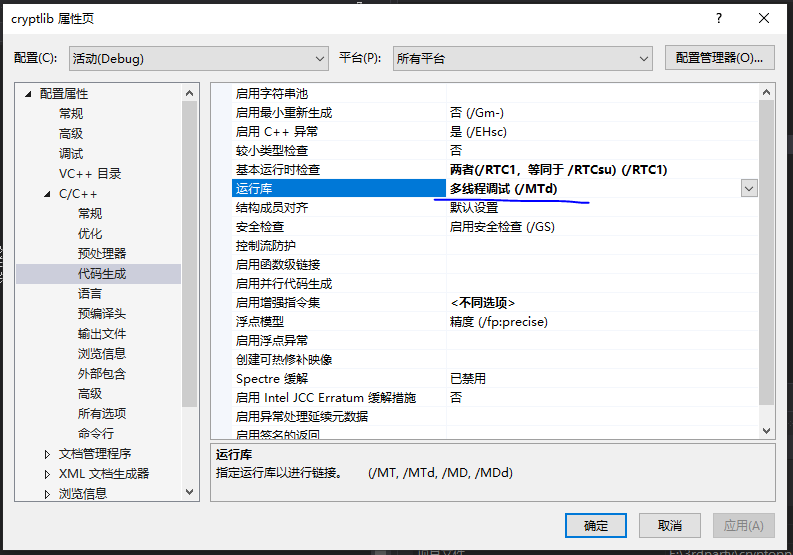
5、编译生成,右击子工程cryptlib点击“生成”
6、作为SDK发布
创建文件夹cryptopp870,内部创建include文件夹(存放.h文件),创建lib文件(夹存放.lib文件)
cryptopp-CRYPTOPP_8_7_0中所有头文件复制到include中
xxx/cryptopp-CRYPTOPP_8_7_0\x64\Output中的Debug和Release文件夹复制到lib中
运行库说明:
在 Visual C++ 中,运行库(Runtime Library)有四个主要的选项,它们在编译和链接时使用不同的设置。这些选项主要影响程序的内存管理、异常处理和调试支持等方面。以下是这四个选项的区别:
-
多线程 (/MT)
-
描述:使用静态链接的多线程运行库。
-
特点:
-
程序在运行时不需要额外的 DLL 支持,因为所有的运行库代码都被静态链接到可执行文件中。
-
可执行文件较大,因为包含了运行库的所有代码。
-
适用于发布版本,因为不需要依赖外部 DLL。
-
-
适用场景:不需要依赖外部 DLL 的独立应用程序。
-
-
多线程调试 (/MTd)
-
描述:使用静态链接的多线程调试运行库。
-
特点:
-
与
/MT类似,但包含了调试信息,适用于调试版本。 -
可执行文件较大,因为包含了运行库的所有代码和调试信息。
-
适用于调试版本,因为可以提供更详细的调试信息。
-
-
适用场景:需要详细调试信息的调试版本。
-
-
多线程 DLL (/MD)
-
描述:使用动态链接的多线程运行库。
-
特点:
-
程序在运行时需要依赖
msvcrt.dll(Microsoft Visual C++ 运行库 DLL)。 -
可执行文件较小,因为只包含了程序自身的代码,运行库代码在
msvcrt.dll中。 -
适用于发布版本,因为可以减小可执行文件的大小。
-
-
适用场景:需要减小可执行文件大小的发布版本。
-
-
多线程调试 DLL (/MDd)
-
描述:使用动态链接的多线程调试运行库。
-
特点:
-
与
/MD类似,但包含了调试信息,适用于调试版本。 -
程序在运行时需要依赖
msvcrtd.dll(Microsoft Visual C++ 调试运行库 DLL)。 -
适用于调试版本,因为可以提供更详细的调试信息。
-
-
适用场景:需要详细调试信息的调试版本。
-
总结:
-
/MT和/MTd使用静态链接,适用于不需要依赖外部 DLL 的独立应用程序。 -
/MD和/MDd使用动态链接,适用于需要减小可执行文件大小或依赖外部 DLL 的应用程序。 -
调试版本通常使用
/MTd或/MDd,因为它们包含了调试信息,有助于调试。
在选择运行库选项时,需要根据具体的需求和项目配置来决定使用哪个选项。确保所有相关的库和模块都使用相同的运行库选项,以避免链接错误。
例如,如果你有一个静态库 mylib.lib 是用 /MD 选项编译的,那么任何使用 mylib.lib 的可执行文件或 DLL 也必须使用 /MD 选项进行编译。
四、使用示例
VS配置:
新建一个测试工程,添加依赖库
属性页-》配置属性-》C/C++ -》常规-》附加包含目录,输入头文件路径E:\3rdparty\dist\cryptopp870\include
属性页-》配置属性-》链接器-》常规-》附加库目录,输入lib文件路径E:\3rdparty\dist\cryptopp870\lib\Debug
属性页-》配置属性-》链接器-》输入-》附加依赖项,添加cryptlib.lib
QT配置:
CONFIG(debug, debug|release) {
QMAKE_CXXFLAGS_DEBUG += /MTd # 或/MDd
}CONFIG(release, debug|release) {
QMAKE_CXXFLAGS_RELEASE += /MT # 或/MD
}win32:CONFIG(release, debug|release): LIBS += -L$$PWD/cryptopp870/lib/Release/ -lcryptlib
else:win32:CONFIG(debug, debug|release): LIBS += -L$$PWD/cryptopp870/lib/Debug/ -lcryptlibINCLUDEPATH += $$PWD/cryptopp870/include
DEPENDPATH += $$PWD/cryptopp870/includewin32-g++:CONFIG(release, debug|release): PRE_TARGETDEPS += $$PWD/cryptopp870/lib/Release/libcryptlib.a
else:win32-g++:CONFIG(debug, debug|release): PRE_TARGETDEPS += $$PWD/cryptopp870/lib/Debug/libcryptlib.a
else:win32:!win32-g++:CONFIG(release, debug|release): PRE_TARGETDEPS += $$PWD/cryptopp870/lib/Release/cryptlib.lib
else:win32:!win32-g++:CONFIG(debug, debug|release): PRE_TARGETDEPS += $$PWD/cryptopp870/lib/Debug/cryptlib.lib
4.1、RSA非对称加密
#include <iostream>
#include <string>
#include <rsa.h>
#include <osrng.h>
#include <base64.h>
#include <files.h>
#include <pem.h>
using namespace std;
using namespace CryptoPP;
class RSAKeyManager {
public:
RSAKeyManager() {}
void GenerateKeys(int keySize = 2048) {
AutoSeededRandomPool rng;
privateKey.GenerateRandomWithKeySize(rng, keySize);
publicKey = RSA::PublicKey(privateKey);
}
std::string GetPrivateKeyPEM() const {
std::string privateKeyPEM;
StringSink privateKeySink(privateKeyPEM);
PEM_Save(privateKeySink, privateKey);
return privateKeyPEM;
}
std::string GetPublicKeyPEM() const {
std::string publicKeyPEM;
StringSink publicKeySink(publicKeyPEM);
PEM_Save(publicKeySink, publicKey);
return publicKeyPEM;
}
void SavePrivateKey(const char* filename) const {
FileSink file(filename);
PEM_Save(file, privateKey);
}
void SavePublicKey(const char* filename) const {
FileSink file(filename);
PEM_Save(file, publicKey);
}
void LoadPrivateKey(const char* filename) {
FileSource file(filename, true);
PEM_Load(file, privateKey);
}
void LoadPublicKey(const char* filename) {
FileSource file(filename, true);
PEM_Load(file, publicKey);
}
void LoadPrivateKeyFromString(const std::string& privateKeyPEM) {
StringSource source(privateKeyPEM, true);
PEM_Load(source, privateKey);
}
void LoadPublicKeyFromString(const std::string& publicKeyPEM) {
StringSource source(publicKeyPEM, true);
PEM_Load(source, publicKey);
}
std::string Encrypt(const std::string& message) const {
AutoSeededRandomPool rng;
std::string encrypted;
RSAES_OAEP_SHA_Encryptor encryptor(publicKey);
StringSource(message, true,
new PK_EncryptorFilter(rng, encryptor,
new StringSink(encrypted)
)
);
return encrypted;
}
std::string Decrypt(const std::string& encrypted) const {
AutoSeededRandomPool rng;
std::string decrypted;
RSAES_OAEP_SHA_Decryptor decryptor(privateKey);
StringSource(encrypted, true,
new PK_DecryptorFilter(rng, decryptor,
new StringSink(decrypted)
)
);
return decrypted;
}
private:
RSA::PrivateKey privateKey;
RSA::PublicKey publicKey;
};
int main() {
try {
RSAKeyManager keyManager;
// 生成密钥对
keyManager.GenerateKeys();
// 将私钥和公钥转换为PEM格式
std::string privateKeyPEM = keyManager.GetPrivateKeyPEM();
std::cout << "RSA Private Key:" << std::endl;
std::cout << privateKeyPEM << std::endl;
std::string publicKeyPEM = keyManager.GetPublicKeyPEM();
std::cout << "RSA Public Key:" << std::endl;
std::cout << publicKeyPEM << std::endl;
// 从字符串加载密钥对
RSAKeyManager loadedKeyManager;
loadedKeyManager.LoadPrivateKeyFromString(privateKeyPEM);
loadedKeyManager.LoadPublicKeyFromString(publicKeyPEM);
// 加密
string message = "Hello, World!";
string encrypted = loadedKeyManager.Encrypt(message);
// 解密
string decrypted = loadedKeyManager.Decrypt(encrypted);
// 输出结果
cout << "Original message: " << message << endl;
cout << "Encrypted message: " << encrypted << endl;
cout << "Decrypted message: " << decrypted << endl;
}
catch (const Exception& e) {
cout << "Crypto++ exception: " << e.what() << endl;
}
catch (const std::exception& e) {
cout << "Standard exception: " << e.what() << endl;
}
catch (...) {
cout << "Unknown exception" << endl;
}
return 0;
}4.2、RSA签名
生成密钥对、签名数据以及验证签名
#include <iostream>
#include <string>
#include <rsa.h>
#include <osrng.h>
#include <base64.h>
#include <files.h>
#include <pem.h>
#include <sha.h>
#include <hex.h>
#include <pssr.h>
using namespace std;
using namespace CryptoPP;
void GenerateKeyPair(RSA::PrivateKey& privateKey, RSA::PublicKey& publicKey) {
AutoSeededRandomPool rng;
privateKey.GenerateRandomWithKeySize(rng, 2048);
publicKey = RSA::PublicKey(privateKey);
}
bool SignMessage(const string& message, const RSA::PrivateKey& privateKey, string &signature) {
try
{
AutoSeededRandomPool rng;
RSASS<PSS, SHA256>::Signer signer(privateKey);
StringSource(message, true,
new SignerFilter(rng, signer,
new StringSink(signature)
)
);
}
catch (const Exception& e)
{
cout << "Sign exception: " << e.what() << endl;
return false;
}
return true;
}
bool VerifyMessage(const string& message, const string& signature, const RSA::PublicKey& publicKey) {
try {
RSASS<PSS, SHA256>::Verifier verifier(publicKey);
/* 解签使用内容+签名 */
StringSource ss(message + signature , true,
new SignatureVerificationFilter(verifier,
NULL,
SignatureVerificationFilter::THROW_EXCEPTION | SignatureVerificationFilter::PUT_MESSAGE
)
);
}
catch (const Exception& e) {
cout << "Verifier exception: " << e.what() << endl;
return false;
}
return true;
}
struct LicenseData {
string message = "2024/6/19, 2024/7/19";
string signature; /* 数字签名,验证数据是否被修改 */
string publicKey; /* 公钥 */
};
int main() {
try {
RSA::PrivateKey privateKey;
RSA::PublicKey publicKey;
// 生成密钥对
GenerateKeyPair(privateKey, publicKey);
// 要签名的消息
string message = "Hello, World!";
// 签名消息
string signature;
bool b = SignMessage(message, privateKey, signature);
cout << "signature:" << b << endl << signature << endl;
// 验证签名
b= VerifyMessage(message, signature, publicKey);
if (b) {
cout << "Signature is valid." << endl;
}
else {
cout << "Signature is invalid." << endl;
}
}
catch (const Exception& e) {
cout << "Crypto++ exception: " << e.what() << endl;
}
catch (const std::exception& e) {
cout << "Standard exception: " << e.what() << endl;
}
catch (...) {
cout << "Unknown exception" << endl;
}
return 0;
}4.3、 Base64 编码和解码
#include <iostream>
#include <string>
#include <rsa.h>
#include <osrng.h>
#include <base64.h>
#include <files.h>
#include <pem.h>
using namespace std;
using namespace CryptoPP;
class Base64 {
public:
static std::string encode(const std::string& data) {
std::string encoded;
CryptoPP::Base64Encoder encoder;
encoder.Attach(new CryptoPP::StringSink(encoded));
encoder.Put((const byte*)data.data(), data.size());
encoder.MessageEnd();
return encoded;
}
static std::string decode(const std::string& encoded) {
std::string decoded;
CryptoPP::Base64Decoder decoder;
decoder.Attach(new CryptoPP::StringSink(decoded));
decoder.Put((const byte*)encoded.data(), encoded.size());
decoder.MessageEnd();
return decoded;
}
};
int main()
{
try {
// 原始数据
std::string data = "Hello, World!";
// Base64 编码
std::string encoded = Base64::encode(data);
std::cout << "Encoded data: " << encoded << std::endl;
// Base64 解码
std::string decoded = Base64::decode(encoded);
std::cout << "Decoded data: " << decoded << std::endl;
}
catch (const Exception& e) {
cout << "Crypto++ exception: " << e.what() << endl;
}
catch (const std::exception& e) {
cout << "Standard exception: " << e.what() << endl;
}
catch (...) {
cout << "Unknown exception" << endl;
}
return 0;
}4.4、AES对称加密
#include <iostream>
#include <string>
#include <aes.h>
#include <modes.h>
#include <filters.h>
#include <hex.h>
#include <osrng.h>
using namespace std;
using namespace CryptoPP;
class AESCipher {
public:
AESCipher(const string& key, const string& iv) : key(key), iv(iv) {}
string Encrypt(const string& plainText) {
string cipherText;
try {
CBC_Mode<AES>::Encryption encryptor;
encryptor.SetKeyWithIV((byte*)key.data(), key.size(), (byte*)iv.data());
StringSource(plainText, true,
new StreamTransformationFilter(encryptor,
new StringSink(cipherText)
)
);
}
catch (const Exception& e) {
cerr << "Encryption error: " << e.what() << endl;
}
return cipherText;
}
string Decrypt(const string& cipherText) {
string plainText;
try {
CBC_Mode<AES>::Decryption decryptor;
decryptor.SetKeyWithIV((byte*)key.data(), key.size(), (byte*)iv.data());
StringSource(cipherText, true,
new StreamTransformationFilter(decryptor,
new StringSink(plainText)
)
);
}
catch (const Exception& e) {
cerr << "Decryption error: " << e.what() << endl;
}
return plainText;
}
private:
string key;
string iv;
};
int main() {
// 生成随机的密钥和初始化向量(IV)
AutoSeededRandomPool rng;
byte key[AES::DEFAULT_KEYLENGTH];
byte iv[AES::BLOCKSIZE];
rng.GenerateBlock(key, sizeof(key));
rng.GenerateBlock(iv, sizeof(iv));
string keyStr(reinterpret_cast<char*>(key), sizeof(key));
string ivStr(reinterpret_cast<char*>(iv), sizeof(iv));
AESCipher aes(keyStr, ivStr);
string plainText = "Hello, World!";
string encryptedText = aes.Encrypt(plainText);
string decryptedText = aes.Decrypt(encryptedText);
cout << "Original Text: " << plainText << endl;
cout << "Encrypted Text: " << encryptedText << endl;
cout << "Decrypted Text: " << decryptedText << endl;
return 0;
}
